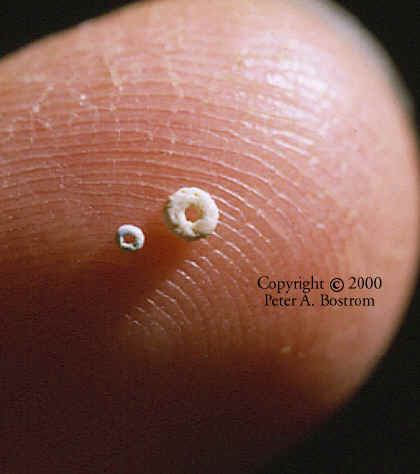|
Beads
These are two of the smallest Beads I have handled here at the lab. The
smallest one on the left is a glass trade bead called a sand bead. It
dates to sometime after European contact. This bead was given to me a few
years ago by a man who had a short string of them in his collection of
beads. He said they came from a site in the southeastern U.S. where
someone was digging many years ago and at the end of the day saw a green
stain in the area they were working. He picked up the green stain along
with the dirt and put it in a bag. It was only some time later he
discovered that the color was actually hundreds of these little glass
trade beads called sand beads. The object they were originally sewn to
must have been very intricate! |
|
|
